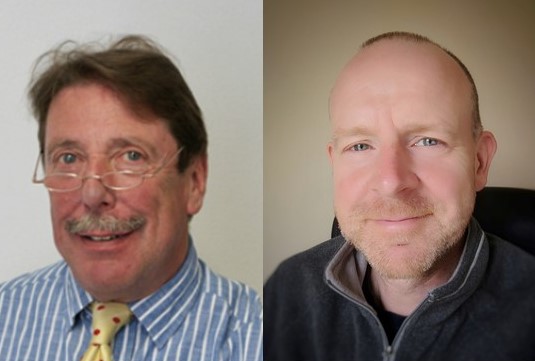Open lecture: The 3,000 year-old Mummy Nesyamun
Posted on 28 May 2021

On Tuesday, 20 April 2021 the Forensic group in the Department of Language and Linguistic Science hosted the online event “The 3,000 year-old Mummy Nesyamun”, part of the University of York Open Lectures series, free open lectures on a wide variety of topics aimed at a general audience.
The event “The 3,000 year-old Mummy Nesyamun” was introduced by Prof. Peter French (Dept. Language and Linguistic Science) and featured invited speakers Dr Stephen Buckley (Research Fellow in Bioarchaeology at the Universities of York and Tübingen) and Professor David M Howard (former Head of the Department of Electronic Engineering at the University of York, now Head of the Department of Electrical and Electronic Engineering at Royal Holloway University of London). The session ended with a lively Q&A session chaired by Dr Dominic Watt (Dept. Language and Linguistic Science).
The talk began with an introduction to cultural, religious and burial practices in ancient Egypt and focused on the priest, Nesyamun, and his 3,000 year-old mummified body, which had been relocated to the UK.
The researchers were able, by using computer tomography (CT) scanning and a 3D printer, to reproduce a 3-D artificial vocal tract based on measured dimensions of Nesyamun’s mummified original. By using this in conjunction with a user-controllable artificial larynx sound source, a vowel sound was synthesised and compared acoustically with vowels produced by modern individuals.
“Although we cannot be sure whether it will be possible to repeat this experiment with further bodies, the underlying concept nevertheless raises an interesting potential for recreating voices of people from different periods in history. Corpses from former times remain in various states of preservation, not only as a result of their having been deliberately embalmed or mummified, as in Nesyamun’s case, but owing to natural conditions too. In North Western lands of Europe, for example, fleshed bodies dating back to the bronze and iron ages have been discovered naturally preserved in peat bogs.” - Prof. Peter French, Dept. Language and Linguistic Science
“We are now lucky enough to have scanning technologies that enable us to investigate the remains of individuals who lived hundreds or thousands of years ago, without having to dissect or even unwrap their bodies. Creating a model of Nesyamun’s vocal tract using the latest methods in vocal tract imaging and 3D printing, and then using that model to synthesise a speech sound like one Nesyamun might have uttered, is a fascinating proof of concept that cannot fail to capture the imagination. It’s also an ideal demonstration of the benefits we gain from experts in different fields pooling their ideas and skills. If only we could know what Nesyamun himself might have thought about this work!” - Dr Dominic Watt, Dept. Language and Linguistic Science
A recording of the event is available on the York Ideas’ Youtube Channel: The 3,000 year-old Mummy Nesyamun: His life, work and recreating a vowel sound
If you are interested in reading about the project: Synthesis of a Vocal Sound from the 3,000 year old Mummy, Nesyamun ‘True of Voice’
The produced sound mentioned in the open lecture can be heard here: vocal sound audio.
